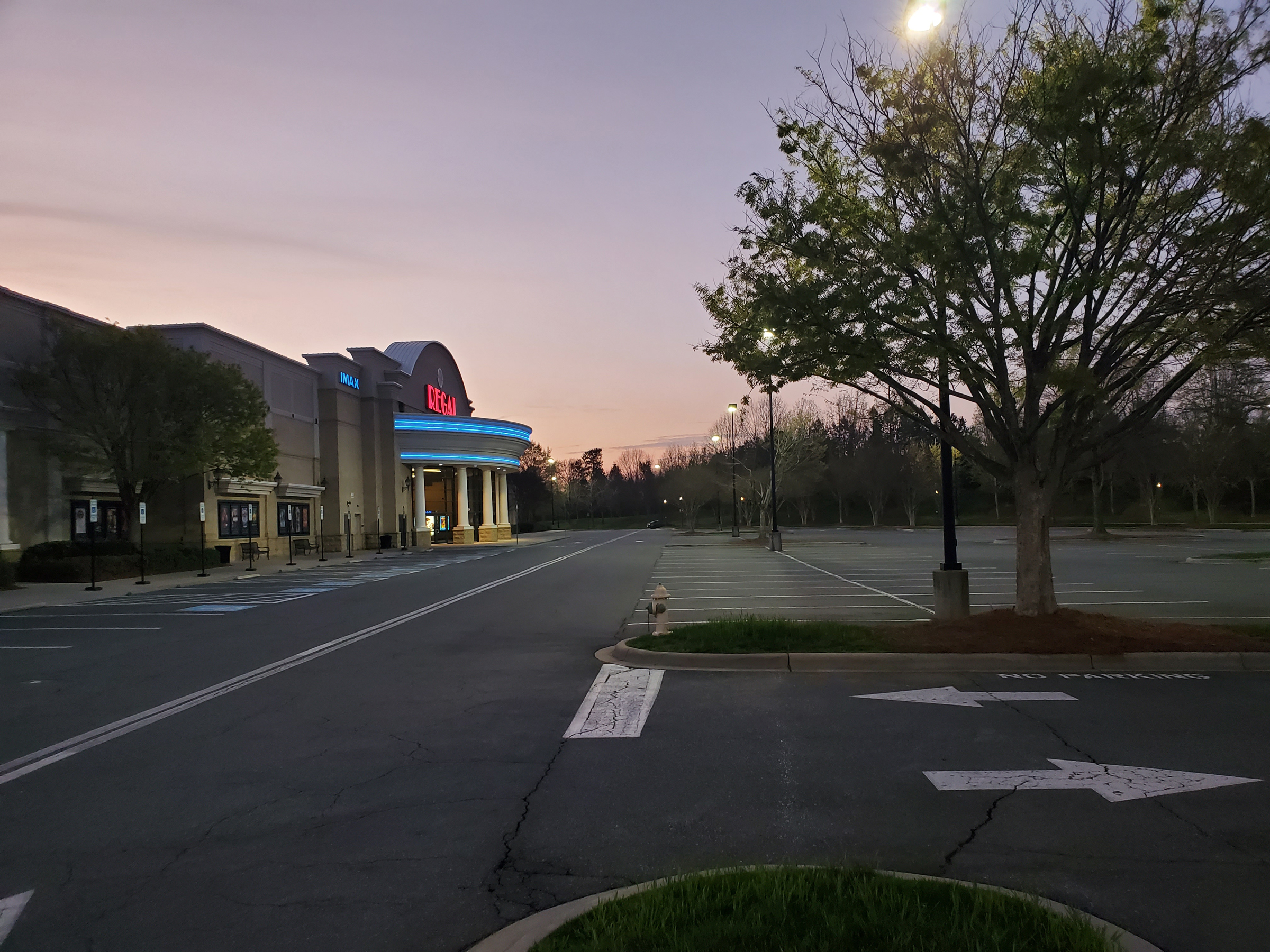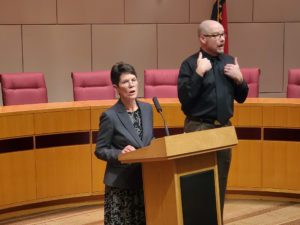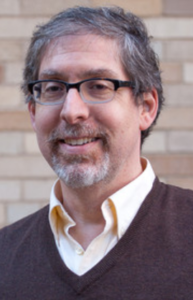How Does Charlotte Reopen?

STEVE HARRISON/WFAE
The country – and North Carolina – is talking about reopening.
But what will that look like? And how will we know it’s safe to reopen?
“We need to try to find an appropriate balance. And it often seems like we’re stuck between a rock and a hard place,” said Jeffrey Shaman, an epidemiologist with Columbia University. “With a rock, it’s lots of people infected and overburdened, collapsing health care system and many, many people dying versus economic destitution, high unemployment, and an economy that might not be able to recover for years from the shocks that we impose on it.”
There is national tension over reopening, as a coalition of mostly Democratic governors on the east and west coasts are forming coalitions to write their own rules about how and when to re-start their economies.
That’s also playing out in North Carolina. A group in Raleigh – Reopen NC – protested this week. Police broke up the protest and tweeted it was a “nonessential activity.”
Protesting is a non-essential activity.
— Raleigh Police (@raleighpolice) April 14, 2020
And the Republican chair of the Gaston County Commission, Tracy Philbeck, wrote Democratic Gov. Roy Cooper last week, urging him not to extend the statewide stay-at-home order that expires in less than two weeks.

STEVE HARRISON/WFAE
He wants Gaston to make its own social distancing rules.
“It is my thought that instead of the state being led by Charlotte, Wake, Raleigh and Durham, where you have these epicenters, or these large spikes,” Philbeck said. “You can’t treat Charlotte like you treat Cleveland County.”
But across the Catawba River, Mecklenburg County – which has all Democrats on its commission – isn’t calling for relaxing the stay-at-home order. There has been little talk about reopening.
“From everything that I know and that I see, I don’t think I would be willing to take that chance,” said Commissioner Mark Jerrell. “We’d look really crazy if we lift that stay-at-home order too early, and then you see a spike. How will people gauge our judgment?”
What Do The Current Models Say?
The University of Washington’s Institute for Health Metrics and Evaluation predicts North Carolina’s hospitals will be most stressed on Friday April 17. The model projects the state will have more than enough hospital beds and ventilators to meet the demand. The IHME model has varied widely over the last month, with the projected national death tolls being lowered significantly.
Other models are grimmer.
Last week, a group of public health experts and epidemiologists from the public and private sector in North Carolina painted a much bleaker picture. They forecast 250,000 total infections statewide by June 1 – even with social distancing.
And on Tuesday, Mecklenburg Health Director Gibbie Harris said the county’s own, different model from the University of Pennsylvania shows the peak will be on June 8. And Harris said that model shows that Mecklenburg hospitals won’t have enough beds and ventilators to handle that projected surge.
But there are questions about both models.
The 250,000 projection is based on the number of cases in the state growing by 8% every day for two months.
That happened at the start of the outbreak. But in North Carolina – and in most states and counties that enacted social distancing – that growth rate has been lowered substantially.
Mecklenburg’s cases are now growing at around 2% and 3% a day, and the state’s growth in cases has been below 8% since April 11.
The most recent county projection, discussed by Mecklenburg health director Gibbie Harris on Tuesday, projects that Mecklenburg cases will reach roughly 2,100 cases by April 25. To reach that number of infections, the county would have to add between 90 and 100 new known cases a day – something that’s never happened during the pandemic.
And while Harris said the hospitals could be overwhelmed by June, Atrium and Novant said this week that they don’t need a 600-bed field hospital.
Is Contact Tracing The Key?
Despite the dire warning about hospitals being overwhelmed in June, Mecklenburg County Manager Dena Diorio said this week that it’s not “realistic” to expect the current stay-at-home order to continue that long.
And Gov. Roy Cooper said this week that the state’s reopening would happen slowly — in stages. And Cooper said the state needs to be able to expand its ability to do contact tracing.
Contact tracing means local health departments attempt to recreate the contacts of an infected person over their last two weeks. Investigators then find those people and test them for COVID-19.
Lee Riley, an epidemiologist at the University of California Berkeley, said that expanded contact tracing should start immediately.

“If we are continuing to see new cases, then we need to know who these people are,” he said. “Are they just not following these directives? Or are they occurring in households, where a member may be a first responder or involved in work that involves close contact? Or are these cases in certain neighborhoods where the message has been sent or publicized?”
Riley said that it’s been three weeks since Mecklenburg’s stay-at-home order, so the source of new infections should be easier to find.
Harris, the Mecklenburg health director, said her office has long performed contact tracing for communicable diseases. She said the county has continued to do that for COVID-19, though she said, with the high number of cases, it’s been “streamlined.”
All interviews are done over the phone, she said.
“At one point the state even said to us, ‘We know that you aren’t going to be able to do much at all,’ ” Harris said. “But our staff has continued to do the kind of contact tracing we need to do, especially for high-risk individuals.”
When Harris says high-risk individuals, she means the elderly or people with underlying health conditions.
“If an individual went to the grocery store, we are not following up with everyone they may have contacted with, that they may have walked by in the grocery store,” Harris said. “But if they were in a work environment, or another environment where they could have potentially exposed people, that’s what we focus on.”
Both Riley and Shaman said the local health departments need to go deeper. They said there needs to be an effort to track down all contacts, such as grocery store clerks or someone who delivered a person takeout from a restaurant.
Riley said that should be easier – in theory – because Mecklenburg residents have been under a stay-at-home order. That means they should have fewer contacts than they would have ordinarily.
Shaman said the U.S. should consider doing contact tracing as South Korea has done it.
The country is adding only about 30 new cases a day in a country of 51 million people
“I would argue, even though it’s a bit invasive and flies in the face of what we think of in terms of civil liberties, of going into people’s credit cards, when they’re found to be positive, they’re going into their phones, and they’re finding out where they went,” Shaman said. “And they’re identifying their contacts based on that. And they’re finding those contacts, and they’re testing and isolating them as well. It seems to be able to keep this thing in check.”
Shaman said South Korea should be copied, but he acknowledged there are challenges.
“There is a logistical issue associated with it, which is not just personnel,” he said. “You have to have the testing capacity and you have to have the laboratory capacity to turn this around. And you would prefer to have a sensitive and specific test with a very rapid turnaround within a few hours.”

STEVE HARRISON/WFAE
In Mecklenburg County, Harris said the health department has seven communicable disease nurses who do contact tracing. Harris is also training some school nurses to do investigations.
And Robert Redfield, the director of the Centers for Disease Control and Prevention, said the federal government has 600 people now helping states with contact tracing, but he said it will have to “amplify” that number.
But Riley says counties need to act on their own and hire and train more investigators right away.
“We have all these unemployed people,” he said. “They could be trained to be public health workers to do contact tracing.”
Harris is skeptical of that.
“In theory, that’s a wonderful idea,” she said. “In practice, it’s very challenging, because it’s complicated work. These are investigators. It’s not just a set of questions that you can run down and collect the information. They really have to dig in and sometimes ask the next question and the next question to get to the answers that we’re looking for.”
Mecklenburg and other health departments are also handicapped by not having enough test kits to determine people who have been in contact with an infected person are positive.
But Shaman said that there are still benefits of extensive contact tracing even without having robust testing. People could be asked to self-quarantine, he said.
Immunity Passport?
In hard-hit places like Italy and New York City – where more than 1% of the population has tested positive for COVID-19 – some people have discussed separating people into two groups: those who have been infected with the coronavirus and those who haven’t.
In addition to testing for the active virus, there are antibody tests that can show if someone has been infected with the coronavirus. The idea is that there are hundreds of thousands of people who had COVID-19 but had mild symptoms or were asymptomatic and antibody tests would identify them.
That would allow those people to return to work — or work in high-risk areas.
But Riley doesn’t think there have been nearly enough infections in North Carolina – even asymptomatic ones – for that to work.
“Even though we’re seeing a lot of cases, I would say it’s maybe 5% to 10% in any region (of people who have been exposed to the coronavirus), and where you are (in North Carolina), maybe lower. That’s a small percentage who can go back.”
He also said it’s unknown how long people are immune.
“We don’t even know that because you have antibody you are protected,” Riley said. “HIV is an example. People have an antibody against HIV, but they aren’t immune from progressing to active disease and getting secondary diseases. That’s true with influenza. That’s why we need to get a new flu shot with a new vaccine each year.”
Wake Forest Baptist Health said this week it will begin a yearlong random sample of 1,000 of its patients looking for coronavirus antibodies — an attempt to get a sense of how widespread the virus is and was in North Carolina. That’s a priority of Republican Senate leader Phil Berger.
Can Charlotte Learn From Other States With Less Restrictions?
In Arkansas, Republican Gov. Asa Hutchinson is one of seven governors nationwide who hasn’t issued a stay-at-home order.
But Arkansas still has severe restrictions. School is closed. Gatherings are capped at 10 people. Bars and restaurants are closed. And the state is encouraging the use of masks.
Arkansas has about 1,500 confirmed cases, and its trajectory looks a lot like Mecklenburg County. For the last week, Arkansas has been in the single digits in terms of percentage growth, adding 20 or 30 new cases a day.
And while Arkansas is a low-density state – North Carolina has four times as many people per square mile – Shaman said it’s worth studying.

“Absolutely, there absolutely is a benefit,” he said. “What we’re seeing because we have such a patchwork of responses within this country, as well as internationally, is a natural experiment. So it’s showing us what happens in different societies with different intervention approaches.”
Shaman added that we are most focusing on places that have been successful in fighting COVID-19, like Singapore, South Korea and Hong Kong. But he said we should study countries like Sweden that have taken a relaxed approach.
“I think there are places internationally that are going to be very revealing about this,” he said. “There’s been a lot of news about how Sweden has not imposed nearly the level of interventions that Norway has or Denmark has, and seeing the contrast or the differences that manifest in those countries…
“It will be very revealing as to what is successful and what isn’t,” he said. “How much we need to compromise our normal economy to stop this virus?”
Can The Republican National Convention Move Forward?
In North Carolina, Gov. Cooper said this week that restrictions would be relaxed slowly.
Shaman and Riley said things should open in stages, in two- or three-week increments. That’s of course because the virus has that long of an incubation period, so it will take that long to see the impact of allowing people more freedom to move.
But Shaman doesn’t see large groups of people congregating anytime soon.
“I don’t see a radical reopening of schools and just saying, alright, let’s reopen schools and see what happens,” he said. “I think that’s too much mixing.”
In Charlotte, there is of course one large gathering in four months: The Republican National Convention.
In a conference call with reporters Wednesday, Marcia Lee Kelly, the CEO of the convention, said the GOP is moving “full-speed” ahead with planning for the event. But she said public health is the top priority, and she said people inside the Spectrum Center could be wearing masks and practicing social distancing.
“We have a beautiful arena. It’s an intimate arena,” Kelly said. “And I’m very happy about playing Tetris with the seats, or whether it’s social distancing, or whether it’s everyone having to wear a mask.”
Shaman said a traditional convention inside the Spectrum Center would be a problem.
“I think it’s a very bad idea,” he said. “I think bringing that number of people together when we’ve had many examples of super spreading happening at mass gatherings is just not a smart thing to do right now. As long as we have a substantial portion of the population that’s still susceptible to this virus, those susceptible persons are basically tinder.”
Click here to subscribe to the Inside Politics podcast (and to give the podcast a rating/review in your favorite podcast app).
Want more? You can sign up here for our weekly Inside Politics newsletter, written by Steve Harrison.
Have a question about the 2020 RNC in Charlotte? Ask us below.